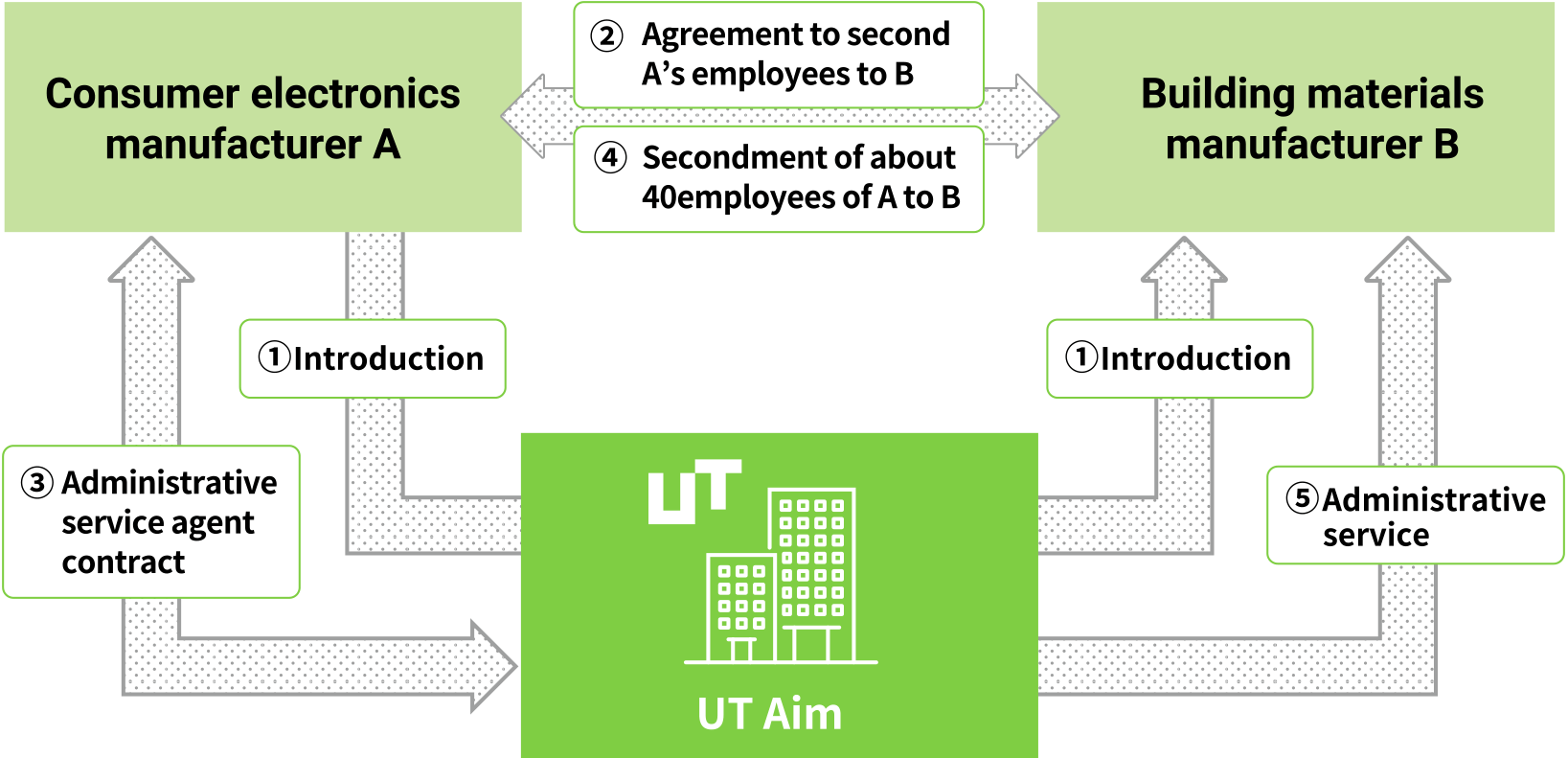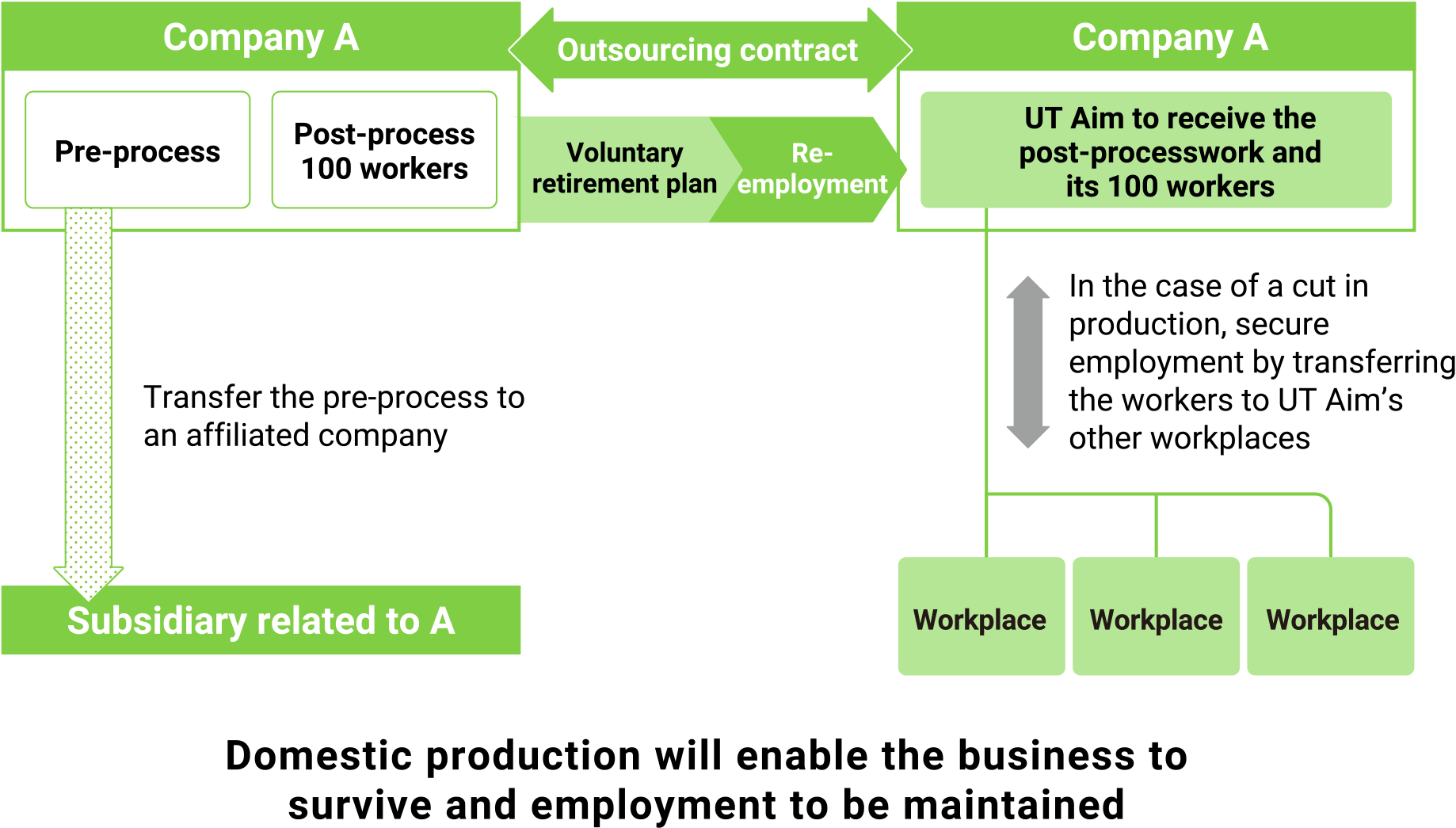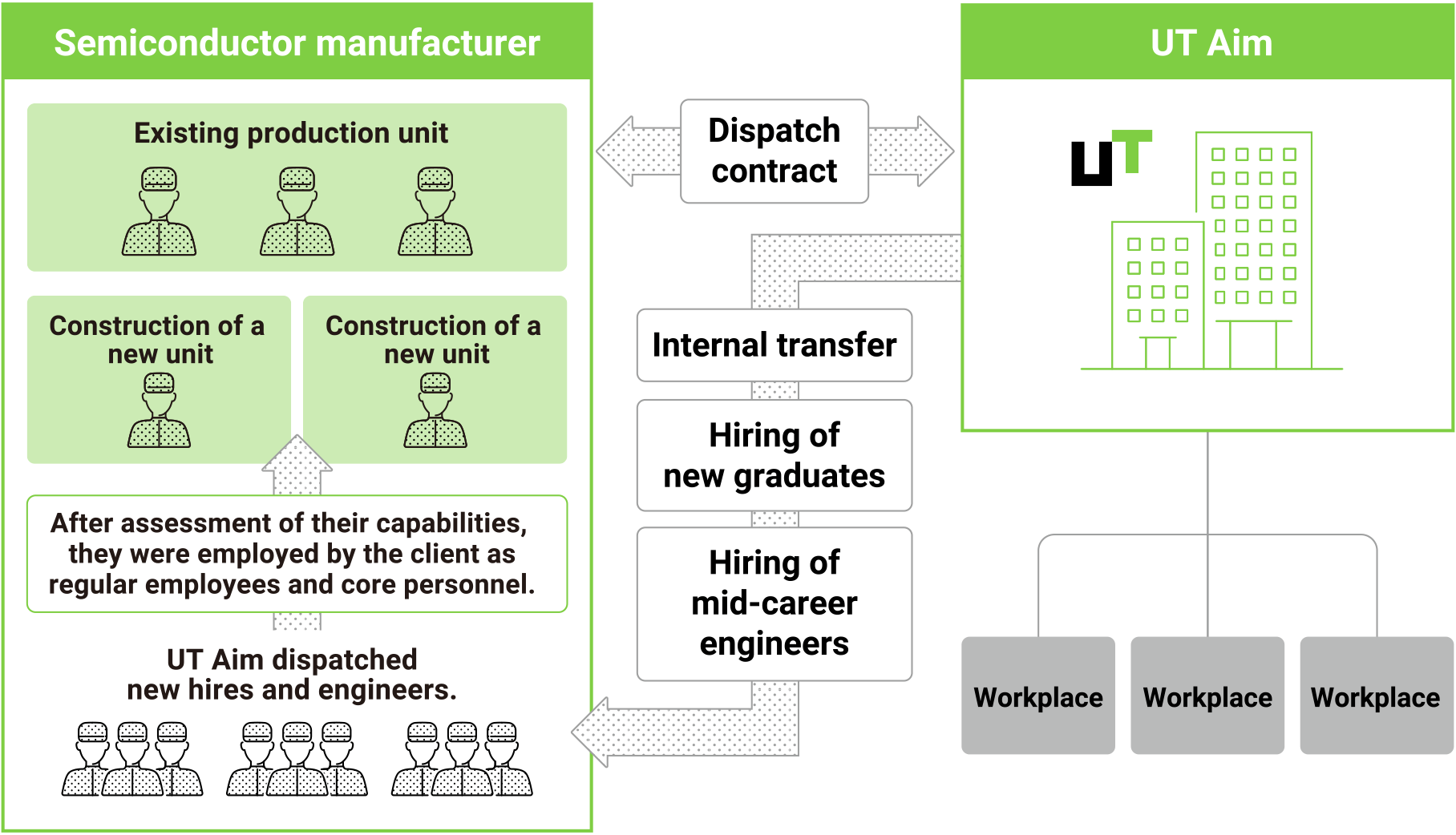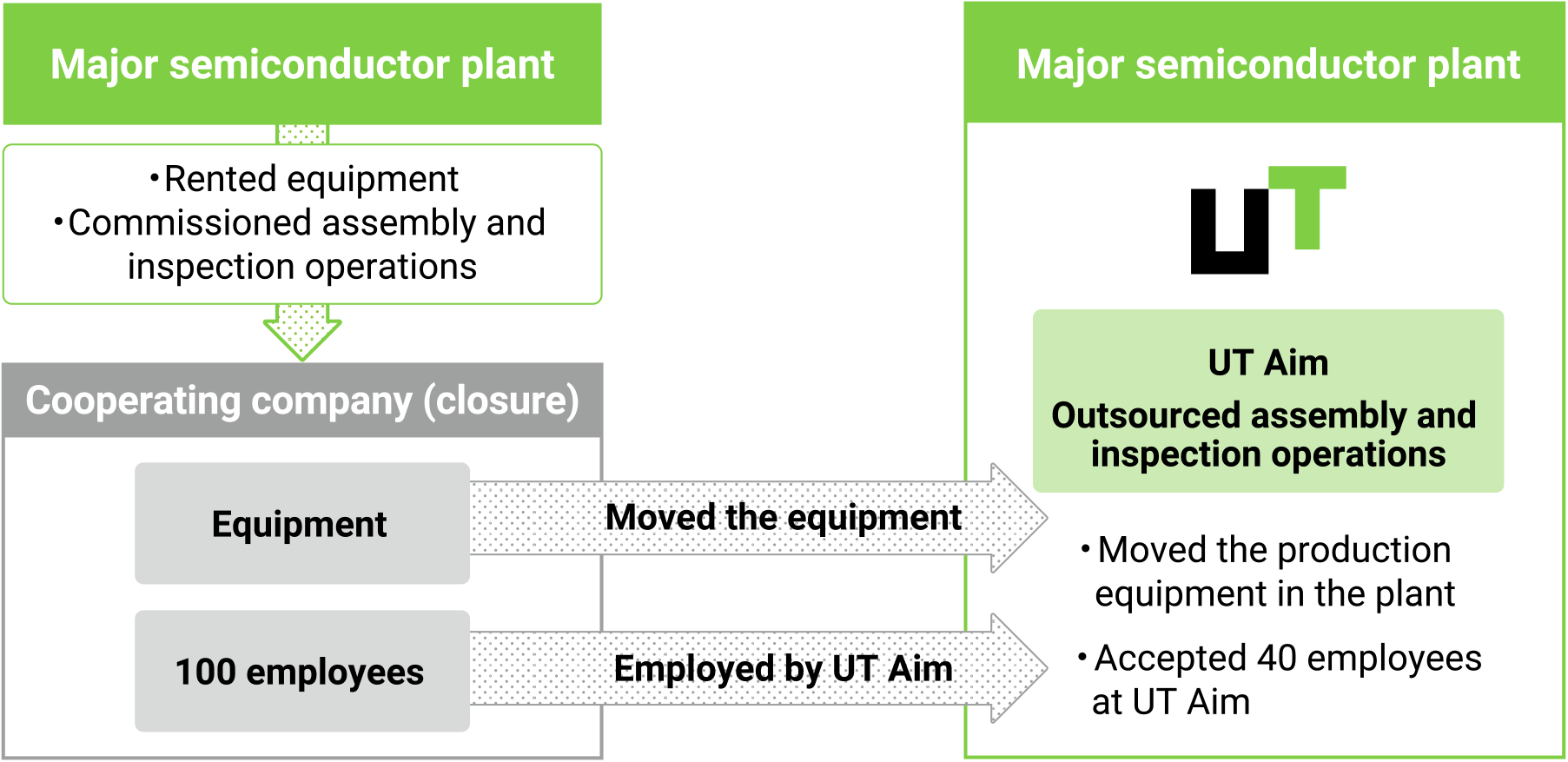CASE STUDIES
We stand by both workers and client companies and stay face to face with them.
We offer a wide range of solutions to various employment-related challenges faced by companies.

- CASE 01
- CASE 02
- CASE 03
- CASE 04
OUTSIDE SECONDMENT SUPPORT SERVICE
This is an example to introduce and place about 40 excess employees in the production system of consumer electronics manufacturer A to our client company B in the manufacturing of building materials.
BACKGROUND
Consumer electronics company A had excess workers on the production line, was looking for an outside company to accept 43 excess workers, but could not find one partly due to the problem of managing the employees of A at another company. Company A therefore faced two issues: finding a workplace that would make use of the workers and dealing with an increased labor cost burden.
SOLUTION
UT Group then proposed a scheme and arranged for company A and building materials manufacturer B to conclude an agreement to second A’s employees to B, as B urgently needed 4,000 workers in Japan.
Regarding the concern over employee management at the destination, consumer electronics manufacturer A and UT Group concluded an administrative service agent contract. As UT Aim took care of the employee management, the administrative work of the receiving company B was reduced. The transferred workers’ attitudes and the subsequent high retention rate, as a result of UT Group's educational strength, were highly praised.
TRANSFER-TYPE OUTSOURCED CONTRACT
(IN-HOUSE SOLUTION)
BACKGROUND
Client company A was losing international competitiveness in pricing due to the appreciation of the yen and was seeing a decline in demand over the medium to long term. It was therefore struggling to balance the need to transfer production bases overseas by closing the domestic factory with the need to maintain employment for its workers.
SOLUTION
We proposed a scheme to transfer A’s pre-process work to A’s affiliated company, to have A carry out a voluntary retirement plan, and to have UT Aim rehire A’s remaining employees.
As A’s post-process work was contracted out as is, mainly to the employees rehired by UT Aim, we managed to simultaneously enable domestic production to survive and employment to be maintained. In the case of a cut in production, the workers could be transferred to UT Aim’s other workplaces and would be guaranteed reliable employment.
HIRING-TYPE DISPATCH OF REGULAR EMPLOYEES
(CORE VENDOR MODEL)
BACKGROUND
This is an example of a client who had planned to make large-scale investments by positioning semiconductors as a core business, amid intensifying competition in market share and price competition with overseas manufacturers. The client was concerned about a shortage of core personnel such as facility maintenance personnel and process engineers but was at the same time wary about hiring regular employees.
SOLUTION
UT Aim hired new graduates who had majored in science and dispatched them as well as mid-career hired engineers and existing employees of UT Aim.
After being dispatched, they received technical education conducted by the client and UT Aim’s technical trainers. After an assessment of their capabilities, they were hired by the client company as regular employees and core personnel.
MEASURES FOR CLOSURE OF A COMMISSIONED
BUSINESS OPERATOR
BACKGROUND
A cooperating company, whose equipment had been rented by a major semiconductor plant and that had commissioned assembly and inspection operations, suddenly closed the business.
SOLUTION
The facility was moved to the semiconductor plant and 40 employees out of 100 working at the cooperating company were employed by UT Aim. The business was also outsourced to UT Aim.
The production system was maintained by moving the equipment to the plant, and the time and cost of inter-plant delivery was significantly reduced. Productivity also increased by 30%, while subsequent workplaces that could utilize the sophisticated skills of the employees of the cooperating company were created.



